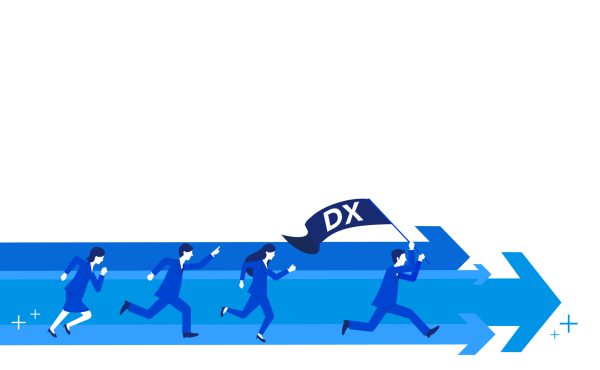Introduction
ITIL transformations are necessary to close the gap to your competitors as well as to position your organization ahead of the pack. Successful transformations require strong leadership focus on behavioral aspects of the change. Focus on the “people issues” ensures the most successful organizational changes. Fostering collaboration and building capabilities among leadership and employees brings about profound and long-lasting individual behavior change that drives the organizational change.
3 Pillars of transformation

While looking at the critical characteristics of profound organizational changes we suggest to focus on behavioral aspects of the organization, processes in place and systems that support the day to day activities. Many ITIL transformations undertaken internally by the organizations focus solely on processes and systems while leaving out what we suggest is the most important pillar of any successful transformation: the behavioral aspect, sometimes called the “people issues”.
In this article we will identify why behavioral aspects are important and what behaviors bring about successful ITIL transformations.
Behavioral ITIL Transformation Focus
Organizations that emphasize mindful, focused attention on behavioral management practices, rather than just fixing old habits that don’t work produce best results. Behavioral transformation management or any “change” seen from the point of view of neuroscientists is like rewiring of the individual’s brain. Change lights up the prefrontalal cortex, which is fast and agile. Overloading the prefrontal cortex can generate fatigue, fear and anger, because of the cortex’s connection to the emotion center of the brain, the amygdala.
Neuroscientists Rock and Schwartz from UCLA in Strategy and Business Journal suggest:
“The traditional command-and-control style of management doesn’t lead to permanent changes in behavior. Ordering people to change and them telling them how to do it fires the prefrontal cortex’s hair trigger connection to the amygdala. The more you try to convince people that you’re right and they’re wrong, the more they push back. The brain will try to defend itself from threats. Our brains are so complex that it is rare for us to be able to see any situation in exactly the same way as someone else. The way to get past the prefrontal cortex’s defenses is to help people come to their own resolution regarding the concepts causing through their prefrontal cortex to bristle.”
McKinsey Global Survey in 2010 found evidence suggesting the importance of engaging employees collaboratively throughout the company and throughout the transformation journey. Major theme was the importance of building capabilities—particularly leadership capabilities—to maintain long-term organizational health. In addition, a focus on strengths and achievements, not just problems, throughout the entire transformation process was strongly tied to long termsuccess.
There is number of best practices to ensure positive behavioral transformation at an organization. We will briefly describe those that bring about best results while undertaking ITIL transformation in large scale organizations.
Collaboration – employee engagement

Focus on employee engagement as early as the planning process is a key success factor. As identified by numerous transformation project reviews, successful transformations are most notably based on identifying underlying mind-sets that would need to change through employee engagement.
Employee satisfaction is based on rational criteria — wages, hours, convenience to where I live, shifts, benefits, etc. While these are all important elements satisfied employees simply fulfill their obligations – their job description – because their motivation is the rational elements of the job.
Employee engagement takes this one step further and moves into the emotional area. An engagedemployee is willing to go the extra mile to ensure a customer has their expectations exceeded. Engaged employees deliver at a higher level of performance than satisfied employees because they have an emotional connection with the company. They have an emotional connection based on an alignment with their core values and those of the organization. They feel good about where they work, where the business is going, what that business stands for and how they do business.Creating an internal culture that has engaged employees is a smart business strategy.
Employee collaboration and cocreation of ITIL transformation plans makes an important factor of successful implementation and long lasting results. As identified by McKinsey Global Survey and very evident in our work the extremely successful transformations are planned by groups of 50 or more engaged employees, while usually large portion of unsuccessful transformations planned by a group of 10 or less.
Capabilities – the strengths to be built upon during the transformation
Often during the organizational transformation focus is placed on the “negative”, what does not work or what specific group of employees in particular needs to change their ways of working. Positive employee and organization capabilities are seldom identified in most unsuccessful pre-transformation assessments and planning process.
Thomas Wright in his article in the Journal of Organizational Behavior, argues that management should focus on cost-benefit analysis from a human asset perspective, on issues such as positive emotional states of employees, and on employee strengths rather than weaknesses.
To ensure reaching the goals of the organizational transformation we suggest to incorporate into the assessment and preparation phase fundamental review of capabilities that an organization currently has. Positive reinforcement of employee and organization capabilities creates strong foundation to build upon and ensures “team spirit” during the subsequent phases of the transformation.
Psychologist Barbara Frederickson’s “broaden-and-build” theory of positive emotions is relevant here. She states that a number of positive emotions, such as joy, contentment and happiness all share the ability to broaden individuals’ thinking and action. In addition, these positive emotions assist in building the individual’s enduring personal resources. This expanded capacity is central to an individual’s ability to grow and prosper, and add value to an organization.
Focusing on strong capabilities of employees or organizations early in the transformation preparation phase rather than focusing only on problems brings about a positive energy that is central in assuring success and continuous improvement throughout the transformation.
Summary
In any large-scale change such as going from good to great performance, cutting costs, or turning around a crisis focusing on the behavioral aspects, the “people issues” ensures the most successful organizational changes. Clearly communicated attention to employee engagement, collaboration, and positive reinforcement of gained capabilities empowers the employees andorganizations to complete profound and long lasting change.




